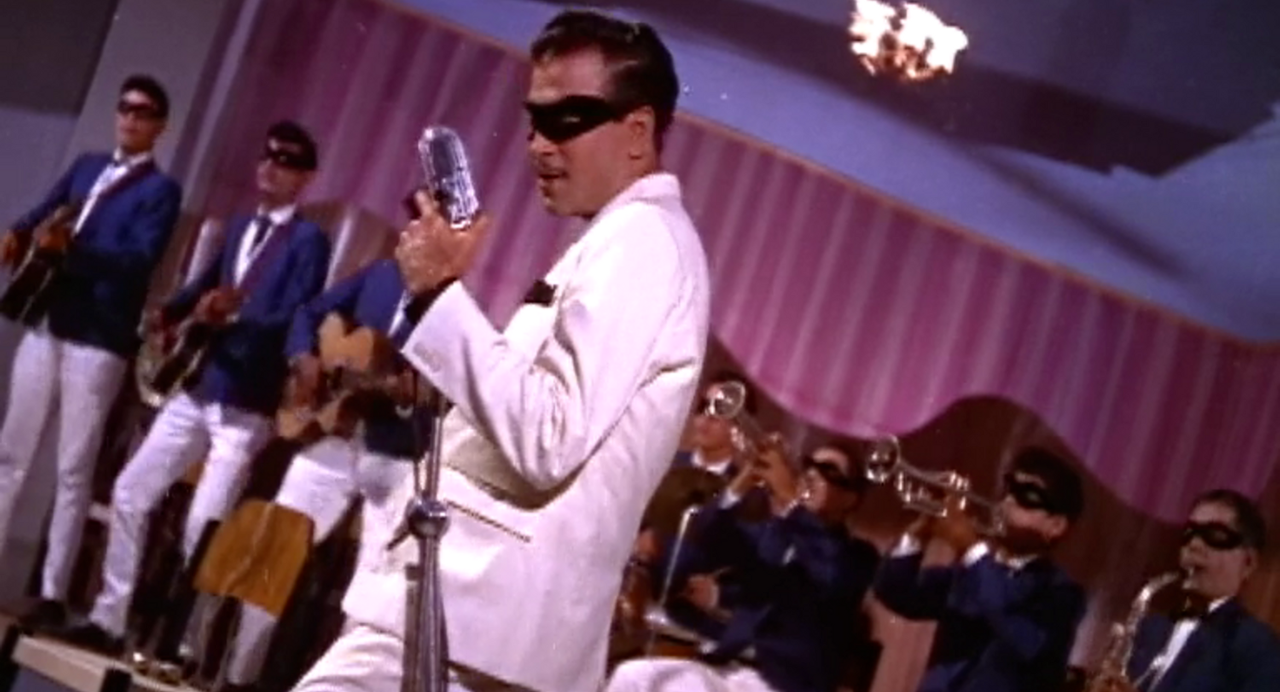Gumnaam
Rating
![]()
Director
Raja Nawathe
Screenplay
Dhruva Chatterjee, Charandas Shokh (Novel: Agatha Christie)
Length
2h 31m
Starring
Nanda, Manoj, Pran, Helen, Mehmood, Dhumal, Madan Puri, Tarun Bose, Manmohan, Naina
MPAA Rating
Not Rated
Review
Agatha Christie is not only the most popular mystery writer of all-time, she’s one of the most widely translated. It then comes as no surprise that her best-selling novel And Then There Were None would be adapted in other languages as well. Gumnaam is one such effort that tries something wholly unlike the two big screen adaptations that came before it.
Urdu for “Unknown/Anonymous,” Gumnaam is a traditional Bollywood musical extravaganza. It takes a story that had twice been executed in under one hour and forty minutes and turns it into a two-hour thirty-one-minute narrative. Reducing the number of potential victims to eight and obscuring the punishment angle of the novel, the film instead situates itself around a single past crime that everyone has some connection to, blending in a concept that doesn’t quite fit the And Then There Were None framework, but makes for an interesting departure.
Directed by Raja Nawathe, the cast includes Nanda, Manoj Kumar, Pran, Helen, Mehmood, Dhumal, Madan Puri, Tarun Bose, and Manmohan as the various figures dancing into and out of the narrative. The premise here is about the niece (Nanda) of a murdered wealthy rival who wins a trip to a foreign country with six other passengers. When they arrive at their destination, a mansion on a remote island, their transportation abruptly leaves stranding them there. Unlike the other adaptations and the novel, this one lays blame fairly quickly, presenting the viewer with outlandish situations and forcing them to side with Asha and those closest to her as they all fend of accusations and death.
As is tradition with Bollywood musicals, there are no fewer than eight musical numbers in the film, which exacerbates the film’s length. They have seemingly little to do with the plot of the film, which can create something of a distraction for those unfamiliar with the style and outlay of a Bollywood project. The performances likewise border on the edge of tastefulness, helping the film feel as much a parody of itself as the work in question. While it’s fascinating to see how other cultures adapt and manipulate material to fit their audience’s expectations, it creates a bit of a dichotomy to the more serious versions that have been propagated.
There have only been five adaptations of Christie’s novel in languages other than English. Four of them have been made in India. This one was filmed in Hindi while two of the others, Nadu Iravil (1970) and Aduthathu (2012), were in Tamil with the third, Aatagara (2015), in Kannada. The fifth adaptation was in Russian. While I would have loved to have reviewed these three other productions, they are not available for streaming or purchase from any source I have access to. As such, it’s hard to say how uncharacteristic this kind of interpretation would be to Indian viewers as compared to American or British ones. The Russian version is on my list to review in the coming weeks.
As a fan of Christie’s And Then There Were None, it’s interesting to look at how different cultures and different directors interpret the material. Gumnaam is one of those films that exists as a compelling trifle, but whose content is cheesy at best and strange at worst. Check out the film if you’re curious, but don’t expect something revelatory.
Review Written
September 26, 2023



















Leave a Reply
You must be logged in to post a comment.